Over the years, the on-demand transportation sector has grown significantly, and there is no denying that Uber has had a major influence on this market. Given its enormous influence and success, it makes sense that a lot of would-be business owners are keen to develop their own ride-sharing applications.
The Growing Demand for Ride-Sharing Apps:
- The on-demand transportation market was valued at $75.51 billion in 2017 and is projected to grow at a CAGR of 19.8% and reach $218.0 billion by 2025.
- The popularity of ride-sharing services continues to soar, with Uber reporting over 150 million active users worldwide as of the fourth quarter of 2023.
- Ride-sharing applications have completely changed urban mobility by providing a practical and affordable substitute for conventional modes of transportation.
If you're an entrepreneur looking for business options in the ride sharing industry, this article will provide you with a comprehensive step-by-step guide on how to build an app like Uber.
Steps to Build an App Like Uber
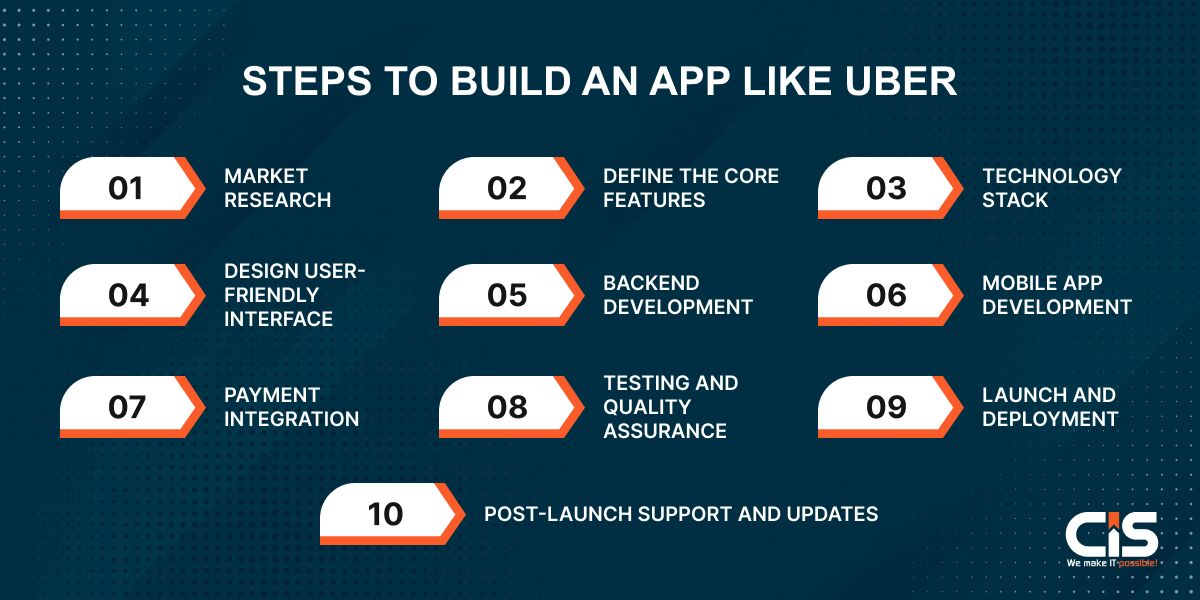
Building an Uber like app requires meticulous planning, from market research and feature definition to interface design, development using scalable technologies, rigorous testing, and strategic launch. Let's look at the steps of building an application like Uber in detail:
1. Market Research
Prior to beginning the development process, you should do a complete target market analysis and determine who your target market is. The actions that must be performed are as follows:
- Identify Your Target Audience: Ascertain the target audience for your ride sharing app. Evaluate their inclinations, characteristics, and actions to customize your ride-sharing application appropriately.
- Analyze Competitor Apps: Examine popular ride-sharing applications such as Uber to comprehend their advantages and disadvantages. Determine the attributes that have contributed to their success and contemplate integrating analogous elements into your application.
- Differentiate Your App: In order to differentiate yourself in the crowded market, come up with original ways to solve problems and incorporate cutting-edge innovative features. Decide what makes your driver app innovative features, then highlight these basic features while it's being developed.
2. Define the Core Features
Thus, Uber's main properties, making a revolution in the sphere of on-demand services, are the key to its success. It is possible that the analysis of these characteristics can help you learn a lot about how to build an app like Uber. These are the core features to think about:
- Ride Booking: App features that will enable customers to order a ride at the click of a button on their mobile phones.
- Tracking: Incorporate real-time tracking capability to enable the customers to track the status of the ride.
- Payment Integration: Allow easy use of the payment mechanisms through the use of common payment options , including PayPal, Stripe, Credit and Debit Cards, Apple Pay, Google Pay, and payment via cash etc.
- Driver Management: Build a solid framework that would enable the driver details to sign up, control their time, and accept orders.
- Ride Sharing: This is a perfect idea to be incorporated in future business models since it will help cut down on costs as well as emissions since customers can share a ride if they are traveling in the same direction.
- Fare Splitting: Allow the user to share the fare with other users or other passengers on the same ride, thus making it easier to share the costs.
- Multi-Language Support: Increase the percentage of the app's popularity by including the translation into multiple languages, thus providing users with an option to choose the preferred language for mobile application usage.
3. Technology Stack
Selecting the appropriate technologies and frameworks is essential when developing a user app idea similar to Uber in order to guarantee a flawless user base experience. When making judgments, take into account aspects like ease of maintenance, security, and scalability. You must think about implementing the following essential technologies in your app:
GPS Tracking: To track drivers' and riders' locations in real time, use GPS tracking. This helps to provide an effective and dependable service by guaranteeing precise drop-off and pickup locations.
Cloud Storage: Utilize cloud storage infrastructure to safely store user data, including payment details, trip logs, and profiles. Cloud storage provides simple access to data, scalability, and reliability, and this is true independent of the user's pickup location.
Real-time Analytics: Use real-time analytics to learn more about market trends, driver performance, and user behavior. You may make well-informed judgements about enhancing the functionality and general user app features experience with the aid of this data-driven method.
Payment Gateway Integration: To enable easy wallet payments within the app, integrate a safe and convenient payment channel. To offer a variety of wallet payment methods, such as digital wallets, credit/debit cards, and even cash payments, think about collaborating with reputable payment companies.
Push Notifications: Use push notifications to alert users of special ride status, and other pertinent changes. This function keeps your user app at the top of consumers' minds and improves user engagement.
Map Integration: Integrate dependable map APIs, such as Mapbox or Google Maps, to give drivers and riders precise navigation. The user experience is improved overall by these APIs' innovative features, which include turn-by-turn directions, real-time traffic updates, and anticipated arrival times.
Customer Support and Communication: Include texting and calling, or in-app chat features to facilitate easy contact between nearby drivers and riders. Provide people with an easy-to-use customer base system so they can report problems and receive prompt assistance.
It is crucial to choose technologies that will allow your app to scale and survive over time and that mesh well with the skills of your development team. Remember that your target audience, region, and the basic features you want to offer can all influence the technologies you choose.
You can guarantee a dependable and feature-rich app that offers a flawless experience for users, drivers, and administrators by carefully choosing the appropriate tech stack.
4. Design User-friendly Interface
Making an aesthetically pleasing and intuitive interface is essential if you want your ride-sharing app to succeed. Among the crucial things to do are the following:
- Visual Appeal: Create an interface that reflects your brand identity and is aesthetically pleasant and professional. Attractive artwork, typefaces, and colors can help draw users in.
- Intuitive Navigation: Ensure that using your app is simple. Give buttons and menus succinct, understandable labels. Organize components in a sensible manner and include simple interaction actions like tapping or swiping.
- Seamless User Experience: Make sure your users have a flawless experience. Reduce the number of pointless stages and expedite the ride-booking process. Reduce the amount of human entry required by incorporating functions such as credit card scanning and address autocomplete.
- Wireframing and Prototyping: Before beginning development time use wireframing and prototyping tools to see how your app will work. This will assist you in locating any possible problems with usability and implementing the required fixes.
- Test and Iterate: During the design process, conduct user testing to get input and make the necessary modifications. Improve the overall usability and user experience by iterating the design in response to user insights.
Recall that drawing and keeping users requires an interface that is easy to use. Take the time to create a user-friendly design that will enable your clients to book rides with ease.
You may create a ride-sharing app similar to Uber that not only satisfies the target market demand but also makes a splash in the fiercely competitive market by following these steps.
5. Backend Development
You can guarantee that your app offers a dependable and seamless user experience, facilitating easy transportation booking and payment processing by concentrating on the backend development team.
To create a successful business model, especially the Uber ride-sharing service, it is necessary to make major changes to the backend infrastructure. Take into consideration these crucial steps: Take into consideration these crucial steps:
- Develop a Robust Backend Infrastructure: Create a backend system that shall be well equipped to manage several requests coming from several users. This includes designing the network, servers and database that would enable the functioning of the program.
- Implement APIs for Third-Party Services: Integrate other third-party services like mapping and payment services with the help of APIs. This also makes it possible for your app to take payment and provide the user with accurate real-time geographical location.
- Choose a Scalable and Reliable Hosting Solution: When starting out, pick a web host that will be able to handle an influx of users down the line. Possibly, with large databases, scalability, dependability, and relatively straightforward administration, it is advised to consider using cloud providers like GCP or AWS.
It will be to your advantage to focus your efforts on the backend development time of your app because this way, you can assure your users of a consistent and perfect experience throughout the transport booking and payment service.
That is why further you will read about how essential the growth and the marketing strategies are to make your ride-sharing app attractive to people and let the consumers stay loyal to the application in the competitive environment.
6. Mobile App Development
According to industry data, most consumers use their cell phones to access ride-sharing apps. For this reason, making an investment in the mobile app development process is essential to guaranteeing a smooth and user-friendly experience.
When it comes to building your own ride-sharing app like Uber, the mobile app development phase is crucial. Here are some simplified steps to guide you through the process:
- Build native or hybrid mobile apps for iOS and Android platforms: Reaching a larger audience is possible if you create distinct apps for iOS and Android. To create cross-platform apps, nevertheless, think about utilizing hybrid frameworks like React Native or Flutter if money or time is tight.
- Leverage modern app development tools: Development time and expense can be decreased by sharing code through the use of tools like React Native and Flutter. You can create apps for iOS and Android that feel and look native, thanks to these frameworks.
- Focus on app performance, responsiveness, and compatibility: Consumers anticipate seamless and quick operation from a ride-sharing program. To guarantee fast loading times, optimize the animations, pictures, and code of your app. To make sure your app is compatible, test it on a range of screens and devices.
By following these steps, you can ensure that your mobile app is intuitive, user-friendly, and capable of meeting the needs of your target audience. Remember to optimize your content for both readers and search engines to enhance your app's visibility and attract organic traffic.
7. Payment Integration
Integrating safe and dependable payment channels into your ride-sharing software is essential to guaranteeing a seamless and trouble-free experience for your users. The following stages will help you with the payment integration process:
Research and Select Payment Gateways:
- Look for payment providers that offer a robust and secure infrastructure, along with reliable customer support.
- Consider well-known payment gateways like Stripe, PayPal, or Braintree.
- Compare their transaction fees, security measures, and integration options before making a decision.
Seamless Transaction Process:
- Create a seamless transaction process that allows users to easily pay for their rides within the app.
- Enable one-click payments or saved card options for faster transactions.
- Implement secure tokenization to protect users' payment data.
Multiple Payment Options:
- Provide a range of payment choices to accommodate varying user inclinations.
- Include popular choices like credit cards, debit cards, e-wallets (such as Apple Pay or Google Pay), and even cash payments where applicable.
- Ensure that all payment methods are compliant with relevant regulations and data protection standards.
Compliance and Security:
- Adhere to the Payment Card Industry Data Security Standard (PCI DSS) to maintain the security and integrity of users' payment data.
- Implement encryption techniques to protect sensitive information during transactions.
- Regularly monitor and update your payment system to address any potential security vulnerabilities.
Seamless Refunds and Disputes:
- Establish a clear refund and dispute resolution process to handle any issues that may arise.
- Automate the refund process whenever possible to facilitate quick reimbursements.
- Provide a user-friendly interface for customers to submit and track refund requests.
You can guarantee a flawless and trustworthy experience for both drivers and passengers by integrating a dependable and secure payment integration into your ride-sharing app. Throughout the development process, keep in mind to give data protection and regulatory compliance first priority.
8. Testing and Quality Assurance
To ensure a bug-free and user-friendly app, it is crucial to conduct rigorous testing. Here are some steps to follow:
- Test across different devices, screen sizes, and operating systems: A successful app should provide a seamless experience for users, regardless of the device or operating system they use. By testing on various devices and screen sizes, you can identify and fix any layout or functionality issues.
- Perform security testing: Security is of utmost importance in any app, especially when dealing with sensitive user information like payment details. Conduct thorough security testing to identify and address any vulnerabilities or loopholes that could lead to a breach. This includes testing for encryption, authentication, and data protection.
- Address any vulnerabilities: Once you have identified any issues or vulnerabilities through testing, it is crucial to address them promptly. This may involve fixing bugs, optimizing code, or implementing additional security measures.
You can make sure your ride-sharing app runs smoothly and gives consumers a safe and effective experience by giving testing and quality assurance top priority.
9. Launch and Deployment
It is essential to meticulously plan to successfully launch and deploy your app that meets user expectations while incorporating robust technologies and thorough testing for scalability and security. Thus, what steps can you take to make sure your app is noticed and draws in users? Let's find out in this section:
Publish your app on relevant app stores:
- Start by creating developer accounts on the Google Play Store and Apple App Store.
- Follow the guidelines and requirements set by each app store to ensure your app meets the necessary criteria for publication.
- Submit your app for review, which may take some time. After approval, customers will be able to download your ride-sharing application.
Create a marketing strategy:
- Determine who your target audience is and what their requirements and preferences are. This will help tailor your marketing efforts to effectively reach potential users.
- Utilize various digital marketing techniques such as social media advertising, content marketing, and influencer partnerships to generate awareness and attract users to your app.
- Offer incentives or promotions to encourage users to download and try your app. This could include discounts on rides or referral bonuses for sharing the app with others.
- Leverage user testimonials or case studies to build trust and showcase the value your app provides.
Continuously monitor and collect user feedback:
- Implement analytics tools to track user behavior, engagement, and usage patterns. You can use this information to pinpoint problem areas and make informed decisions.
- Encourage users to provide feedback within the app or through surveys. This feedback can provide valuable insights into user satisfaction, feature requests, or any issues they may have encountered.
- Update your app frequently in response to user comments and industry developments. This demonstrates that you are responsive to user needs and committed to delivering a top-notch experience.
10. Post-Launch Support and Updates
To keep users interested and satisfied when your app launches and starts to gain popularity, it's critical to offer regular updates and support. The following actions will guarantee smooth post-launch assistance:
- Regular Updates: Regularly release updates to enhance the core functionality and list of features of your app. This keeps your app relevant in a market that is changing quickly and demonstrates your dedication to offering a top-notch user experience.
- User Feedback: Actively seek and listen to user feedback to understand their needs and pain points. This can be done through in-app surveys, reviews, or feedback forms. Incorporate user suggestions and make improvements accordingly.
- Customer Support: Offer reliable customer support channels to assist users with any issues or inquiries. This could be a dedicated customer support team accessible via phone, email, or live chat. Promptly resolve user concerns to maintain user satisfaction and loyalty.
- Technical Issue Resolution: Ensure you have a system in place to quickly identify and address any technical issues that users may encounter. Implement monitoring tools and regularly test your app for bugs or glitches. Swiftly troubleshoot and resolve any issues to minimize user frustration.
- Stay Updated With Industry Trends: Stay abreast of the latest industry trends and advancements in technology. This will help you stay competitive and offer innovative features or services. Regularly upgrade your app to incorporate new core functionalities and ensure compatibility with updated operating systems.
Features for Riders in Uber Like Application
Apps for ride-sharing have completely changed how we travel. They offer efficiency, safety, and convenience to millions of users globally. To build an app like Uber, these are the must-have features of a rider-focused Uber-like app: user registration, ride booking, GPS tracking, fare estimation, payment integration, ride history, and customer support.
-
User Registration and Profile Management
- Easy sign-up using email, phone number, or social media accounts.
- Profile customization, including profile picture, contact details, and preferred payment methods.
-
Real-Time Ride Tracking
- GPS integration for real-time tracking offers the best trip route using google maps of the driver's location.
- Estimated time of arrival (ETA) updates.
- Share trip status with friends or family for safety.
- Integration of maps: Google maps are integrated in the IOS and Android app versions.
-
Ride Scheduling
- Book rides in advance for future dates and times.
- Set reminders for ride scheduling.
-
Multiple Payment Options
- Secure in-app payments via credit/debit cards, digital wallets, and PayPal.
- Option to split the fare with co-riders.
-
In-App Communication
- In-app chat and call options to communicate with the driver.
- Push notifications for ride scheduling status updates.
-
Ride History
- Access to past rides, including trip details and receipts.
- Option to rebook a previous ride with a single tap.
-
Fare Estimation
- Instant fare calculation based on distance and time.
- Display of fare breakdown, including base fare, distance fare, and any applicable surcharges.
-
Safety Features
- SOS button for emergency assistance.
- Driver and vehicle details are visible before the ride begins.
- Rider rating and review system to ensure quality service.
-
Ride Options
- Choose from various ride types, such as economy, premium, and shared rides.
- Vehicle preferences (e.g; eco-friendly options).
-
Loyalty Programs
- Rewards and discounts for frequent users.
- Referral bonuses for inviting new users.
Features for Drivers to in a Ride-Sharing App Like Uber
To build an app like Uber, consider the features useful for drivers in an Uber-style app, such as ride acceptance, GPS navigation, earnings tracking, and in-app messaging.
User-Friendly Registration
- Simple Sign-Up: Easy registration with email, phone number, or social media accounts.
- Document Upload: Secure upload for driving license, vehicle registration, and insurance.
Real-Time Navigation
- GPS Integration: Accurate real-time navigation and route optimization.
- Traffic Updates: Live traffic conditions to avoid congested routes.
Ride Requests and Matching
- Instant Notifications: Alert drivers of ride requests in their vicinity.
- Smart Matching: Match drivers with nearby riders efficiently.
In-App Communication
- Chat Feature: Text messaging between drivers and riders.
- Voice Calls: In-app voice calls for better communication.
Earnings and Payments
- Fare Calculation: Transparent fare breakdown, including distance, time, and surge pricing.
- Payment Options: Support for multiple payment methods - credit cards, digital wallets, and cash.
- Earnings Dashboard: Detailed earnings reports and transaction history.
Ratings and Reviews
- Rating System: Allow riders to rate drivers after each trip.
- Feedback Loop: Collect feedback to improve service quality.
Safety and Support
- Emergency Button: Quick access to emergency services.
- Client service: Available around-the-clock for any problems or questions.
Vehicle Management
- Vehicle Profile: Details of the vehicle, including make, model, and year.
- Maintenance Alerts: Reminders for regular vehicle maintenance and checks.
Admin Panel for an App Like Uber
Dashboard
- Overview: Real-time data on rides, revenue, and user activity.
- Graphs: Visual representation of key metrics.
- Quick Actions: Buttons for common tasks like approving drivers or resolving issues.
User Management
- User List: View all registered users.
- User Profiles: Detailed information on each user, including ride history and ratings.
- Actions: Ban/unban users, reset passwords, or send notifications.
Driver Management
- Driver List: View and manage all registered drivers.
- Approval Queue: Approve or reject new driver applications.
- Driver Profiles: Detailed information on each driver, including vehicle details and ratings.
- Performance Monitoring: Track driver performance and handle complaints.
Ride Management
- Ride List: View all rides, past and ongoing.
- Ride Details: Detailed information on each ride, including route and fare breakdown.
- Dispute Resolution: Tools to handle ride disputes between drivers and users.
Financials
- Revenue Reports: Detailed breakdown of earnings.
- Payout Management: Manage driver payouts and view transaction history.
- Refunds: Process and track refunds.
Support
- Support Tickets: View and manage user and driver support tickets.
- Knowledge Base: Access to FAQs and troubleshooting guides.
Settings
- General Settings: Configure app settings like language, time zone, and currency.
- Payment Settings: Manage payment gateways and transaction settings.
- Notification Settings: Set up email and push notifications.
How Much Does It Cost to Build an App Like Uber?
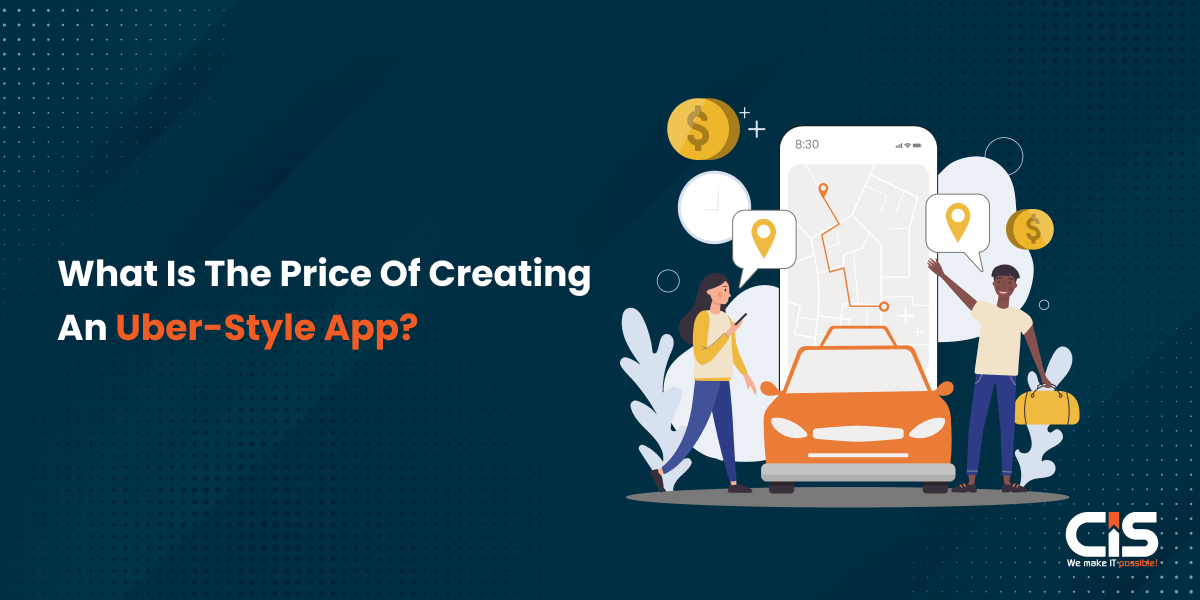
Determining the cost of building an Uber-like app involves several factors which encompasses development, design, features, and ongoing maintenance.
The global ride-sharing market is expected to grow by more than 40 percent between 2023 and 2028. The market value is expected to amount around 216 billion U.S. dollars in 2028 according to Statista. Knowing the expenses associated with creating an app similar to Uber is essential if you're thinking about doing so.
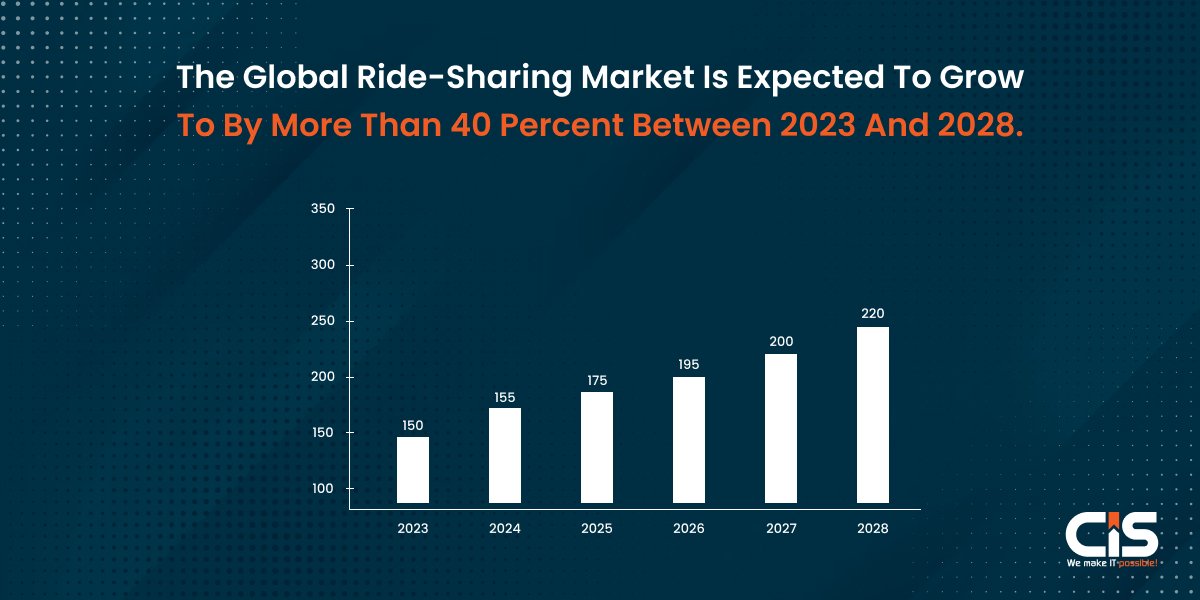
Key Factors Influencing Development Costs
-
App Features
-
Essential Features:
- User registration and profiles
- Ride booking and scheduling
- GPS navigation and location tracking
- Payment integration
- Ride History
-
Advanced Features:
- Real-time ride tracking
- In-app chat and call
- Driver and passenger ratings and reviews
- Surge pricing
- Loyalty programs
-
Essential Features:
-
Platform Choice
- iOS
- Android
- Both (Hybrid/Cross-platform)
-
Design and User Experience
- Wireframes and prototypes
- UI/UX design
-
Backend Development
- Server infrastructure
- Database management
- API integration
-
Third-party Integrations
- Payment gateways
- Google Maps and navigation services
- Messaging APIs
-
Development Team
- Project manager
- Frontend and backend developers
- UI/UX designers
- QA testers
-
Location of Development Team
- North America: $100-$200/hour
- Europe: $50-$100/hour
- Asia: $20-$50/hour
Let's now examine the cost breakdown for building an app like Uber:
Estimated Cost Breakdown
Feature/Service
Estimated Hours
Cost (North America)
Cost (Europe)
Cost (India)
Basic Features
300-500
$30,000 - $100,000
$15,000 - $50,000
$10,000 - $35,000
Advanced Features
200-400
$20,000 - $80,000
$10,000 - $40,000
$6,000 - $30,000
Design & UX
100-200
$10,000 - $40,000
$5,000 - $20,000
$3,500 - $15,000
Backend Development
200-400
$20,000 - $80,000
$10,000 - $40,000
$6,000 - $30,000
Third-party Integrations
50-100
$5,000 - $20,000
$2,500 - $10,000
$1,500 - $8,000
Testing & QA
100-200
$10,000 - $40,000
$5,000 - $20,000
$3,000 - $15,000
Additional Considerations
-
Maintenance and Updates
- Regular updates
- Bug fixes
- Adding new features
-
Marketing and Launch
- App store optimization
- Marketing campaigns
Total Estimated Cost
The hourly rate used for software development teams has a significant impact on the app's development time cost. The entire cost breakdown to construct an Uber-like app can range from $100,000 to $360,000 or more, depending on the complexity and location of the development team, as indicated by the components and breakdown above.
Revenue Models for an Uber-like App
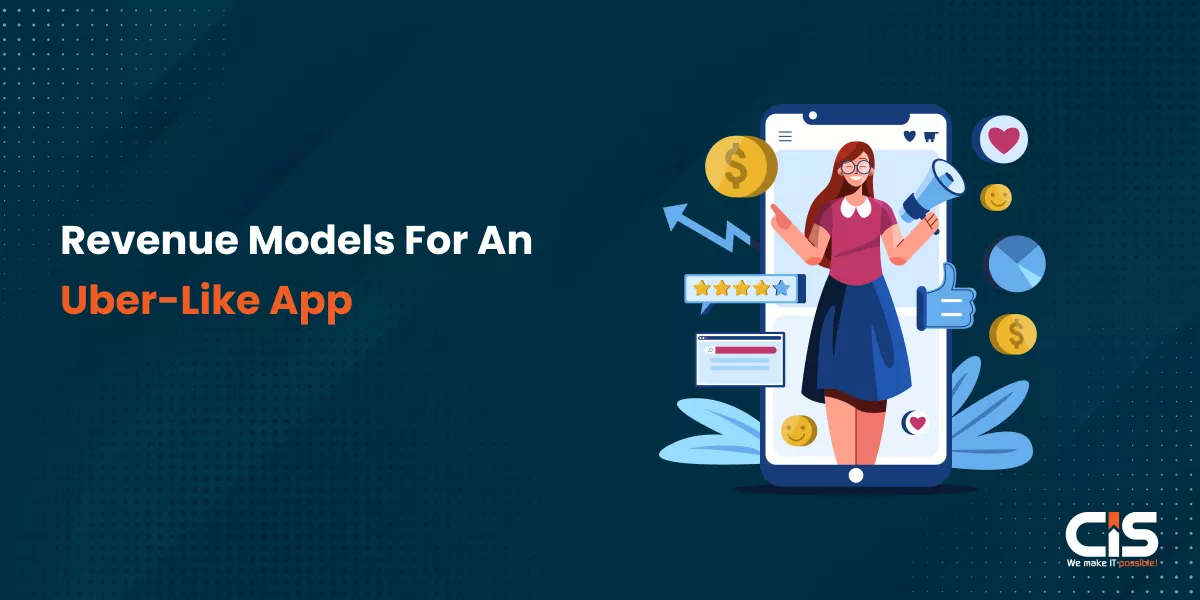
Understanding the revenue models for an Uber-like app is essential when building an app like Uber, ensuring a profitable and sustainable business model. Advertising revenue generated by Uber with its retail media platform stood at 140 million U.S. dollars in 2021. The revenue was projected to increase more than seven-fold and reach one billion dollars by 2024.
The necessity for ride-sharing applications is only anticipated to increase due to urbanization's expansion and the growing need for easy transportation.
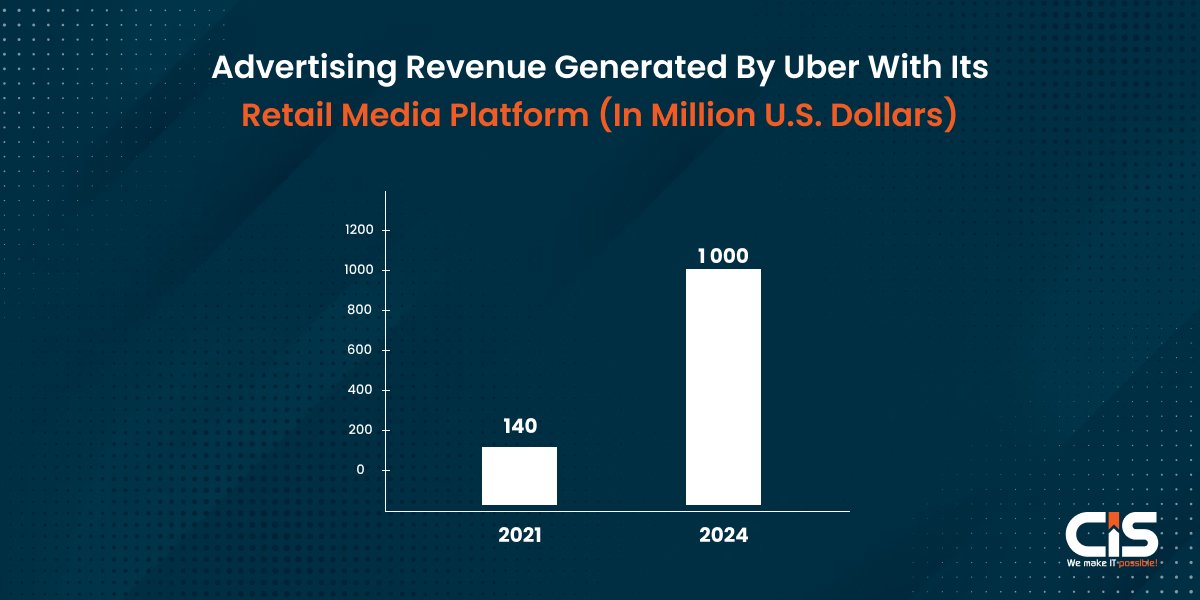
Revenue Models Breakdown
Understanding the revenue model breakdown is essential when considering the development of an app like Uber, as these factors can significantly influence the overall expense and profitability of your project.
- Commission-Based Model
- How It Works: The app charges a commission fee for each ride booked through the platform. This proves to be the dynamic pricing model for uber.
- Example: Uber charges drivers a service fee of 25-30% of the fare.
- Benefits: Steady revenue stream that aligns with the volume of rides.
- Surge Pricing
- How It Works: Prices increase during high-demand periods.
- Example: During peak hours or bad weather, fares can increase significantly.
- Benefits: Maximizes revenue during high demand that encourages more drivers to be available.
- Subscription Plans
- How It Works: Users pay a monthly fee for discounted rides or premium features.
- Example: Uber Pass offers discounted rides, free deliveries, and other perks for a monthly fee.
- Benefits: Predictable revenue that attracts frequent users.
- Advertising
- How It Works: Display ads within the app or offer promotional deals.
- Example: Partnering with local businesses to show ads or promote offers.
- Benefits: Additional revenue stream and engages users with relevant offers.
- Partnerships and Sponsorships
- How It Works: Collaborate with brands for exclusive deals or sponsorships.
- Example: Offering discounts for rides to specific events or locations.
- Benefits: Boosts brand visibility and provides value-added services to users.
- In-App Purchases
- How It Works: Users can purchase additional services or features within the app.
- Example: Buying ride credits or accessing premium features like luxury cars.
- Benefits: Enhances user experience to generate extra revenue.
Want More Information About Our Services? Talk to Our Consultants!
Conclusion
To sum up, developing an app similar to Uber takes meticulous preparation, creativity, and in-depth knowledge of the on-demand transportation sector. Aspiring business owners can set themselves up for success by implementing the procedures described in this article to develop an app that meets the demands of contemporary users.
Therefore, don't miss this chance to develop your idea for an on-demand transportation service similar to Uber. The correct team plan, and execution will enable you to build a platform that transforms commuting and has a long-lasting effect.
Keep in mind that the CISIN App Development team is here to support you at every turn as you set out on this path. With a proven track record of accomplished projects and our proficiency in app development, we can assist you in realizing your vision. Get in touch with CISIN right now to begin developing your on-demand ride-sharing application.


